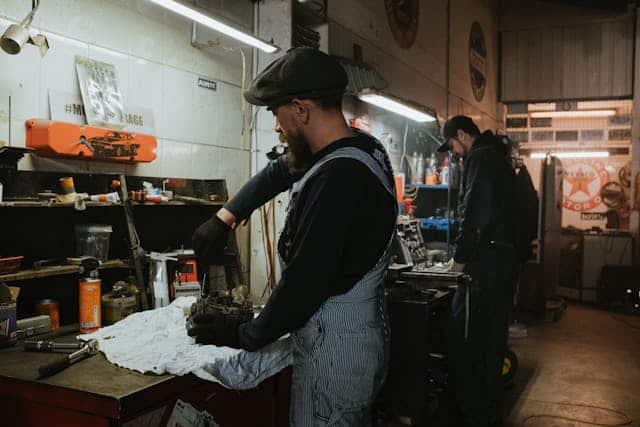Understanding the Lifespan of Repaired Vehicle Parts
 When your vehicle undergoes repairs, especially after a collision, understanding the lifespan of the newly installed or repaired parts is crucial. This knowledge can significantly impact your expectations, maintenance schedule, and future financial planning for your vehicle.
When your vehicle undergoes repairs, especially after a collision, understanding the lifespan of the newly installed or repaired parts is crucial. This knowledge can significantly impact your expectations, maintenance schedule, and future financial planning for your vehicle.
Various factors influence how long repaired parts last, including the quality of the parts used, the precision of the repair work, and the type of maintenance that follows. This article explores these aspects to help you better understand the longevity of repaired vehicle parts and how to maximize their lifespan.
Quality of Replacement Parts
OEM vs. Aftermarket Parts
The choice between Original Equipment Manufacturer (OEM) parts and aftermarket parts can significantly affect the durability of repairs. OEM parts are designed to match exactly what was originally in your vehicle, offering reliability and performance that align with the manufacturer’s specifications. Aftermarket parts, while often more affordable, can vary in quality and may not always offer the same guarantees of fit and function, potentially leading to a shorter lifespan.
Warranty and Manufacturer Standards
Always check the warranty offered with any replacement parts. A longer warranty period can often indicate a higher quality part that’s expected to last longer. Additionally, parts that adhere to stringent manufacturing standards tend to have a longer lifespan and perform better over time.
Installation and Repair Quality
Skill of Technicians
The expertise of the technicians performing the repairs plays a critical role in how well parts will function and last over time. Skilled technicians ensure that repairs are done correctly, parts are fitted as they should be, and no additional stress is put on new parts, which can prematurely wear them out.
Repair Methods and Technology
Modern repair shops use advanced technology and methods that can significantly extend the life of repaired parts. Techniques such as precision welding, computer-aided alignment, and high-quality paint matching systems contribute to repairs that last. It’s important to choose a repair shop that invests in the latest technology and repair methods.
Vehicle Usage and Maintenance
Regular Maintenance
After repairs, regular maintenance is crucial to ensuring the longevity of the new parts. This includes following the manufacturer’s recommended service schedule, using the correct fluids and parts for your vehicle, and addressing any issues as soon as they arise.
Driving Habits
Your driving habits can also affect the lifespan of repaired parts. Harsh driving, such as frequent hard stops, rapid acceleration, and driving on poor road surfaces, can lead to faster wear and tear. Adapting a more gentle driving style can help extend the life of vehicle parts.
Environmental Factors
Weather Conditions
Extreme weather conditions, such as intense heat, cold, or humidity, can affect the durability of vehicle parts. For example, rubber seals and gaskets can dry out and crack in extreme heat, while metal parts are more prone to rust and corrosion in wet or humid environments. Using protective measures like regular washing and waxing, parking in covered areas, and using coolant additives can help mitigate these effects.
Conclusion
The lifespan of repaired vehicle parts can vary widely based on several factors. By choosing high-quality parts, ensuring that repairs are carried out by skilled technicians, following proper maintenance schedules, and considering environmental factors, you can significantly enhance the durability and performance of your vehicle’s repaired components. Understanding these elements allows you to make informed decisions about your vehicle’s upkeep and prepare for future needs efficiently.
